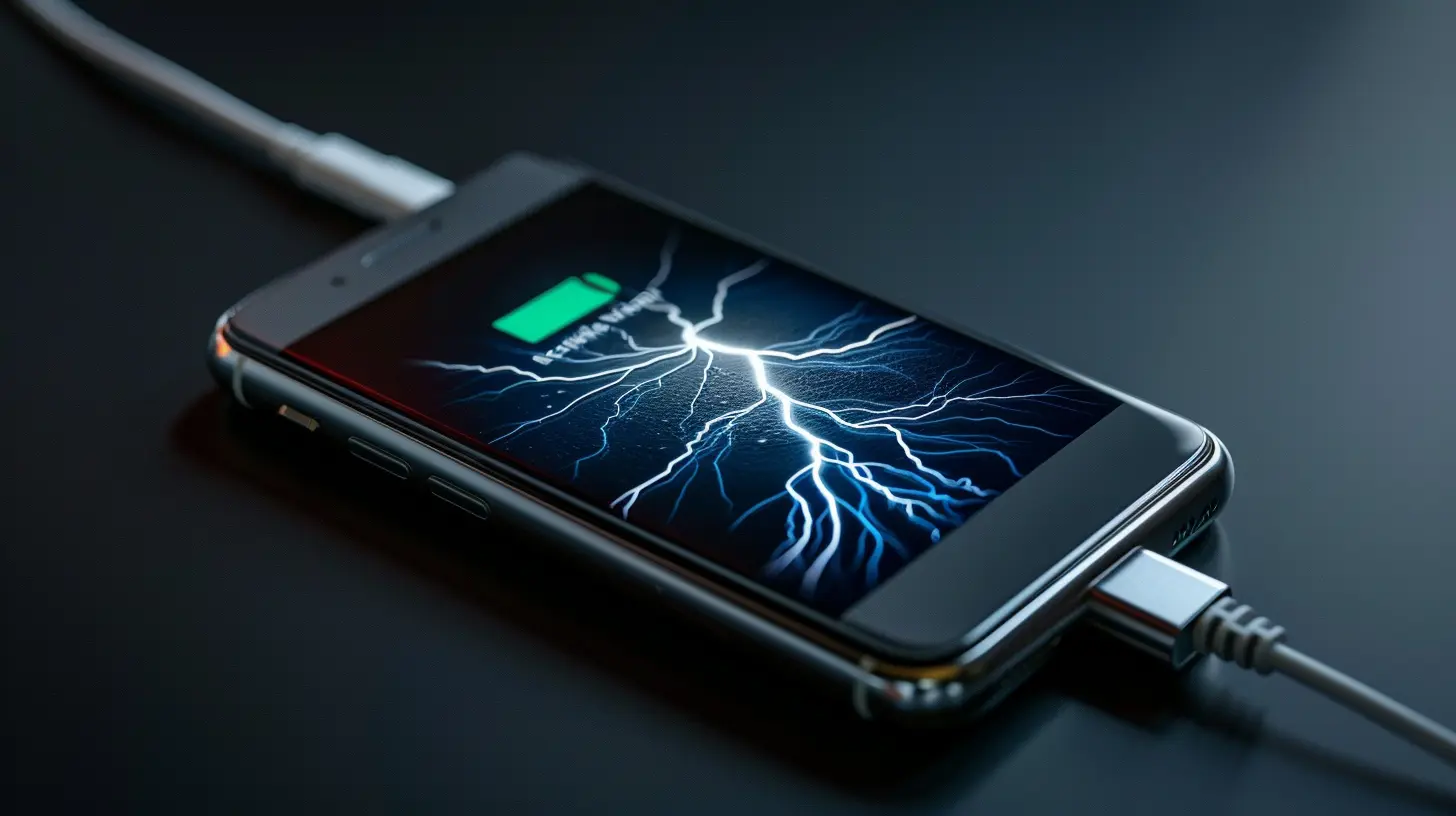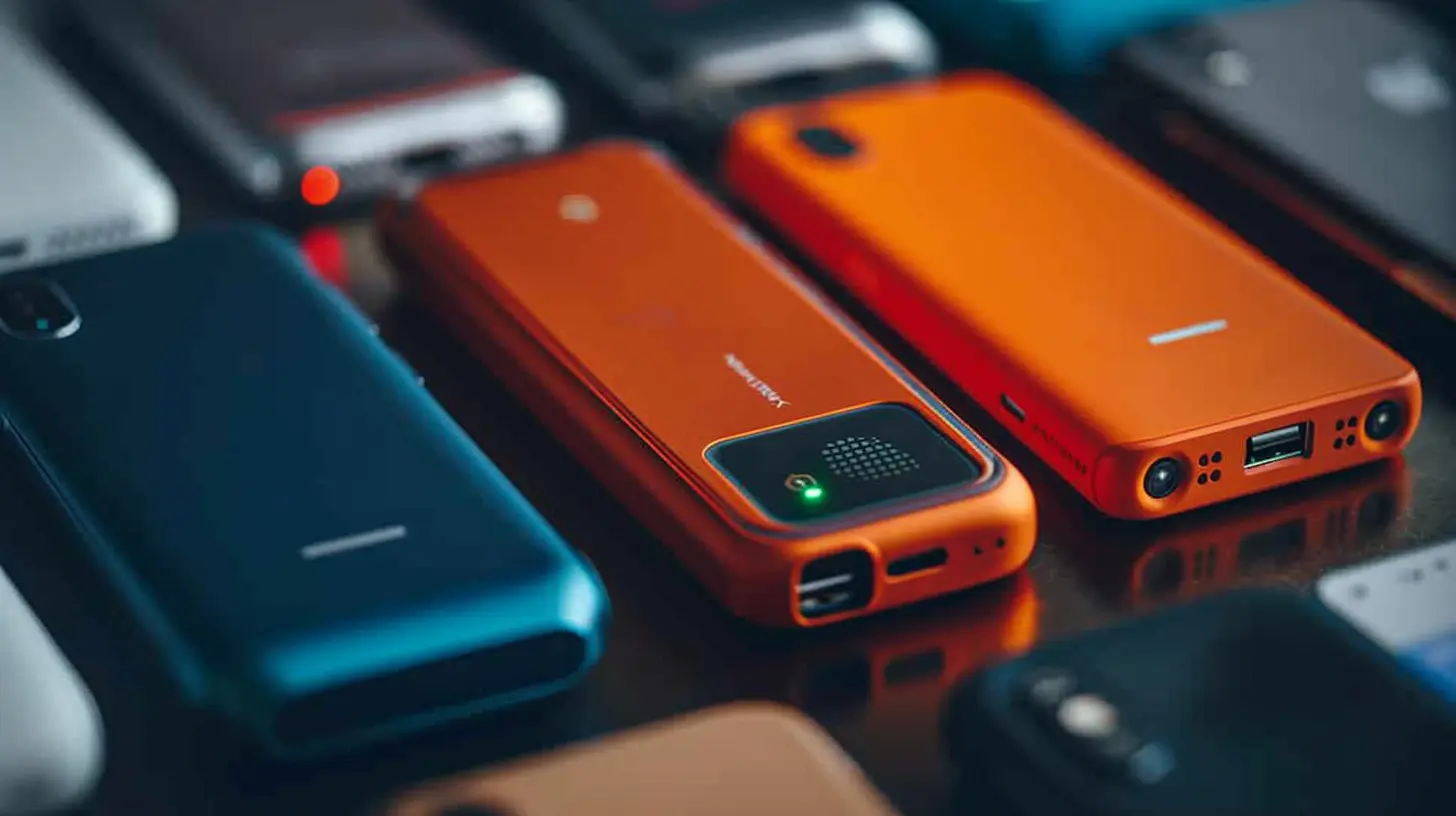Self-Charging Devices: The Next Step in Battery Innovation
5 July 2025
Ah, batteries. Those little energy boxes we rely on to keep our world spinning. From our smartphones and smartwatches to laptops and electric toothbrushes—if it doesn't plug in, it probably runs on some form of battery. And let’s be real: nothing crushes the soul quite like seeing that dreaded 1% battery warning. 😱
But what if I told you there’s a future just around the corner where low batteries could become a problem of the past? Yep, we’re talking self-charging devices—tech that powers itself without needing to be tethered to a wall socket like a vampire caught in a power nap. Goosebumps? Yep, me too.
Let’s plug into this electrifying topic (pun totally intended).
The Battery Battle We’ve All Been Fighting
Before diving headfirst into the magical world of self-charging gadgets, let’s acknowledge the elephant in the room: battery life hasn’t been keeping up with our fast-paced, always-on lifestyles.Sure, we’ve got fast charging. Awesome. But guess what? That’s just making our pit stops at the wall outlet slightly shorter. We're still playing a never-ending game of "charge, deplete, repeat."
Our devices are getting smarter, thinner, and more power-hungry. Meanwhile, our batteries... well, they’ve been dragging behind like someone who hit snooze too many times.
If battery innovation were a race, we’ve been stuck running in flip-flops. But now, self-charging tech might just be the pair of high-performance sneakers we’ve been waiting for.
Wait, What Exactly Are Self-Charging Devices?
Great question, my curious friend! Self-charging devices are electronics equipped with the ability to generate, harvest, and store their own power, without needing to be plugged in.Sounds like sci-fi magic, right? But it’s not. It’s real, it’s happening, and it’s super cool.
These gadgets use tech like:
- Solar panels
- Kinetic energy converters
- Thermoelectric generators
- Ambient radio frequency (RF) energy harvesters
Basically, they grab power from their environment like energy ninjas. Whether it’s sunlight, heat, movement, or even stray Wi-Fi signals—if there’s energy to spare, these devices are ready to soak it up.
Solar-Powered Tech: Charging Under the Sun (and Even Indoors!)
Let’s start with the most well-known player on Team Self-Charge: solar power. You’ve seen this in those dorky but surprisingly effective solar-powered calculators from the 90s, right?But today, the game has leveled up. We're talking:
- Smartwatches with solar charging faces
- Phones with built-in solar panels (yes, really)
- Solar-powered keyboards, backpacks, and even hearing aids
What's even cooler? These solar cells are getting smarter. Some can even convert indoor light into usable energy. That’s right—your desk lamp might soon become your phone's new best friend.
Still, solar’s got limitations. Cloudy day? Dim room? Nighttime? You're outta luck. That’s where other energy harvesters swoop in to save the day.
Shake It Off: Kinetic Energy Charging
Remember those old flashlights you had to shake like a maraca to power up? That’s kinetic energy in action.Today, kinetic charging is sleeker and more high-tech. Self-charging smartwatches and fitness bands harvest energy from your movements—like your morning jog or even your victory dance when you dodge yet another Zoom meeting.
These devices use piezoelectric materials or miniature generators that convert motion into electricity. So every step you take is literally powering up your tech. It’s like getting paid in electricity to stay active. Fitbit meets electric utility company.
Just imagine telling your grandkids, “Back in my day, we had to find a charger. Now I just run to check my email.” Wild.
Thermoelectric Charging: Hot Stuff, Baby!
Heat is another untapped power source—as in, the warmth from your body (yes, you’re basically a walking battery).Thermoelectric generators take the temperature difference between your skin and the surrounding air and turn it into energy. How? Don’t worry, I won’t science you to death, but let’s just say it's all about some fancy physics that converts heat into electric juice. 🔥
Wearables are prime candidates for this. Think smartwatches or medical monitors powered by just your body heat. That’s right, folks. You're so hot, your gadgets can literally live off your vibes.
Radio Frequency Harvesting: Wi-Fi to the Rescue
Here’s the plot twist no one saw coming: Wi-Fi could soon charge your devices. Let that sink in.Radio frequency (RF) energy harvesting captures energy from the electromagnetic soup we live in—Wi-Fi signals, Bluetooth, even those radio waves bouncing around. By capturing and converting these into tiny amounts of electricity, micro-devices can stay alive without ever needing a wired feed.
We're talking ultra-low-power gadgets here: smart sensors, wearables, or IoT devices that don’t need much juice to begin with. It’s like having a power drip running silently in the background.
Disclaimer: your Wi-Fi router won’t be charging your phone anytime soon, but this tech opens the door to maintenance-free sensors and devices that just exist... quietly and perpetually powered. 🤯
Real-Life Devices Already Killing the Charging Game
Alright, enough with the theory—let’s name-drop a few of the early legends in the self-charging world:- Seiko Astron GPS Solar Watch – Never needs a battery replacement. Just give it a little light and it's good to go.
- Matrix PowerWatch – Charges using your body heat. Also tells time, in case you were wondering.
- LunaS Smart Ring – Harnesses kinetic energy from your hand’s movement. Kinda like the magic ring your Fitbit wishes it could be.
- Samsung’s Eco Remote – Solar-powered TV remote. Because why should your remote need batteries in 2024?
There are even prototype smartphones that use small solar panels or kinetic systems to keep themselves humming. We’re still not at “phone-that-charges-when-you-breathe” level, but give it time.
So... Are We Saying Goodbye to Wall Chargers?
Not so fast, charger haters. Self-charging isn’t perfect (yet).Most of these systems only generate small amounts of power—enough for low-energy tasks or trickle charging. They're great for wearables, sensors, and IoT devices, but your energy-glutton smartphone or laptop still needs more juice than these systems can deliver consistently.
And let’s be honest, trying to charge your Nintendo Switch by shaking it like a tambourine might be a little tiring.
But here’s the thing: hybrid systems are on the rise. Devices that top off with kinetic or solar energy to extend their battery life between charges. It’s not about replacing the charger entirely—it’s about needing it less often.
That’s a game-changer.
Why Self-Charging Devices Matter (More Than You Think)
Self-charging tech isn’t just cool—it’s got real impact:1. Convenience, obviously
No more being chained to an outlet. No more packing three different charging cables "just in case." Freedom tastes sweet, doesn't it?2. Sustainability for the win
Fewer disposable batteries = less e-waste. Self-charging tech is a big victory for our poor, overworked planet.3. Reliability in wild scenarios
In remote locations—think hiking, camping, or surviving the zombie apocalypse—self-charging gear could literally be a lifesaver.4. Maintenance-free IoT devices
Imagine a world where smart home sensors or agricultural monitoring tools just... work forever. No charging. No battery swaps. Just blissful, endless uptime.What’s Next for This Powerful Movement?
The future might just be a spontaneous charge-fest. Innovations coming down the pipeline include:- More efficient energy harvesters (smaller, lighter, more potent)
- Flexible solar materials—imagine entire phone cases or clothing sewn with solar fabric
- Nanogenerators that harvest energy from sound, rain, or even your heartbeat (whoa)
- AI-powered power management to optimize how and when devices harvest and store energy
You might one day have a phone that charges through your pants, a smartwatch powered by your pulse, and earbuds that steal energy from the air. Science fiction? Nope, just really advanced science facts.
Final Thoughts: The Power is With(in) You
We’re on the cusp of something big here. Self-charging devices won’t just make life easier—they're going to redefine how we think about energy itself.Wall sockets? Optional. Charging cables? Ancient history. Low battery anxiety? Cured.
The tech’s still young, sure. But the seeds have been planted, and soon enough, we’re going to reap a harvest of devices that can handle their own dang power needs—finally.
So next time you grumble while hunting down your charger for the third time today, just remember: the days of plugging in are numbered. And honestly, it’s about time.
all images in this post were generated using AI tools
Category:
Technology InnovationAuthor:

Pierre McCord
Discussion
rate this article
2 comments
Fleur Schultz
Self-charging devices represent a groundbreaking leap in battery technology. By harnessing ambient energy, these innovations promise to reduce dependency on traditional power sources, significantly extend device lifespan, and reshape our approach to energy consumption in everyday electronics. Exciting times ahead!
November 4, 2025 at 5:11 AM

Pierre McCord
Thank you for your insightful comment! I completely agree—self-charging devices have the potential to revolutionize our energy consumption and extend the longevity of our gadgets. Exciting times indeed!
Lena Abbott
Self-charging devices could revolutionize our approach to energy consumption, promoting sustainability and convenience. Embracing this innovation paves the way for a future where technology seamlessly integrates with our lives.
July 13, 2025 at 4:24 PM

Pierre McCord
Thank you for your insightful comment! Self-charging devices indeed hold great potential for enhancing sustainability and integrating technology into our daily lives.


